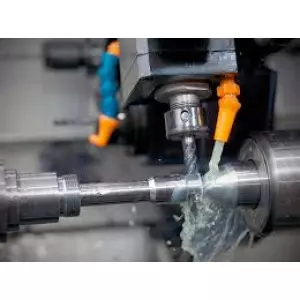- Home
- About Us
- Products
- Services
- Updates
- Gallery
- Contact Us
Tool Maintenance Changodar
Details of Tool Maintenance
Importance of Tool Maintenance
Tool maintenance is a critical practice in any manufacturing setup, directly impacting product quality, process efficiency, and equipment lifespan. It involves the regular inspection, cleaning, lubrication, and restoration of molds, dies, cutting tools, and jigs used in various production operations. Consistent tool upkeep minimizes machine downtime and reduces scrap rates, helping firms maintain productivity while avoiding costly tool replacements.
Preventive tool maintenance also ensures that dimensional tolerances are preserved throughout repeated production cycles, which is especially vital in sectors like plastic injection molding, metal stamping, CNC machining, and die casting.
Aspects of Effective
These include scheduled cleaning to remove material build-up, sharpening or replacing cutting edges, checking alignment, and monitoring tool wear patterns. Lubrication of moving parts and corrosion protection are also part of routine care.
For plastic molding tools, temperature control channels must be flushed and cleared to ensure uniform cooling. In CNC tools, wear tracking and spindle balance checks are essential to prevent vibration and inaccuracies. Proper documentation and tool performance logs support predictive maintenance and help optimize regrinding schedules.
Long-Term Value
With increasing demand for accuracy and volume in modern manufacturing, tool maintenance is no longer optional—it is a strategic priority. Implementing dedicated maintenance areas, using ultrasonic cleaners, applying anti-wear coatings, and deploying digital inspection tools ensures a robust maintenance ecosystem.
Offered Product
Tool Maintenance
Ensure The Longevity And Optimal Performance Of Your Tools With Our Comprehensive Tool Maintenance Service. Our Expert Team Specializes In Cleaning, Sharpening, And Repairing A Wide Range Of Tools, From Hand Tools To Power Equipment. By Utilizing Advanced Techniques And High-quality Materials, We Restore Your Tools To Peak Condition, Enhancing Their Efficiency And Safety. Regular Maintenance Not Only Extends The Life Of Your Tools But Also Improves Your Productivity, Making It An Essential Inves... Read moreTool Maintenance Service In Ahmedabad
Ensures Consistent Product QualityRegular Tool Maintenance Helps Retain The Exact Shape, Tolerance, And Surface Finish Of Plastic Components. Without Upkeep, Mould Wear Can Lead To Defects Such As Flashing, Warping, Or Inconsistent Wall Thickness. Cleaning, Polishing, And Re-lubrication Restore Mould Accuracy. This Ensures Stable Production Cycles And High-quality Output.Used In Diverse Industrial ApplicationsThese Maintenance Practices Are Used In Diverse Industrial Applications Such As A Continue
Expert Tool Maintenance For Industrial Units
Precision Tool CareWe Provide Tool Maintenance Services To Keep Industrial Tools, Dies, Molds, And Cutting Equipment In Top Working Condition. With Regular Cleaning, Sharpening, And Alignment, We Help Extend Tool Life, Reduce Breakdowns, And Improve Production Quality. Our Service Ensures Your Tools Remain Reliable During Every Cycle.Built With In-House ExpertiseOur Trained Technicians Handle Mechanical, Electrical, And Surface Wear Repairs For A Wide Range Of Industrial Tools. With Modern Continue
Top Notch Tool Maintenance Services In Local Rajkot
Top-notch Tool Maintenance Services In Local Ahmedabad, Rajkot, SuratWe, "Jiyana Enggtech", Offer Top-notch Tool Maintenance Services In Local Ahmedabad To Extend The Life Of Industrial Tools. Services Include Sharpening, Repair, And Calibration To Maintain Optimal Performance In Fabrication And Production Units.Comprehensive Maintenance For All Types Of Industrial ToolsReduces Downtime And Improves Production EfficiencySkilled Technicians For Precise Calibration And RepairCost-effec Continue




